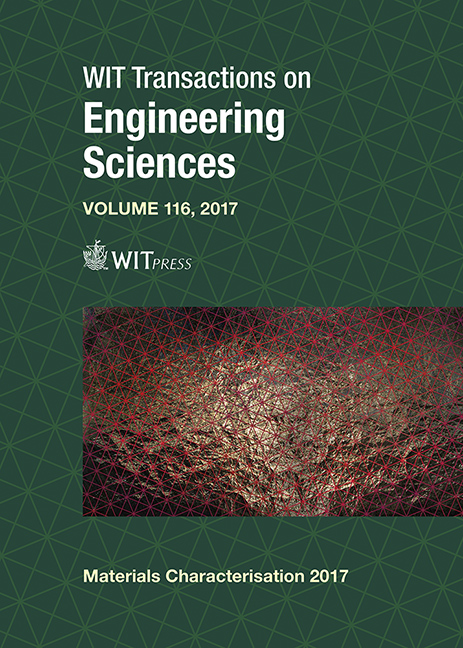A CONSTITUTIVE FRAMEWORK FOR HUMAN DERMIS MECHANICAL MODELLING
Price
Free (open access)
Transaction
Volume
116
Pages
12
Page Range
367 - 378
Published
2017
Size
607 kb
Paper DOI
10.2495/MC170381
Copyright
WIT Press
Author(s)
ALESSANDRA ALDIERI, MARA TERZINI, CRISTINA BIGNARDI, ELISABETTA M. ZANETTI, ALBERTO L. AUDENINO
Abstract
Finite element models, in conjunction with adequate constitutive relations of the materials involved, have proved to be crucial in many medical applications, such as in surgical planning. Nevertheless, a thorough numerical analysis of dermis’ mechanical response is a challenging research area because of dermis’ highly anisotropic and nonlinear behaviour. The aim of this work has been to assess the performance of two orthotropic and one isotropic hyper-elastic constitutive laws, providing an experimental-computational framework for the definition of reliable constitutive models of dermis tissue. Experimental, equi-biaxial stress-strain data obtained on human reticular dermis specimens have been exploited in order to extract, through a stochastic optimization procedure, constitutive parameters of three widely used constitutive laws: the Ogden, Holzapfel and Gasser-Ogden-Holzapfel (GOH) models. A set of specimen specific parameters and a set of best matching parameters, determined by simultaneously fitting all experimental stress-strain curves, have been obtained. The goodness of the selected laws has been assessed by means of FEM simulations performed in Abaqus (Simulia, Dessault Systèmes Inc.) which reproduce the actual specimen boundary conditions and geometry, rebuilt through an image segmentation process implemented in MATLAB (The MathWorks, Inc.). Models have been validated comparing experimental and numerical outcomes related to reference points on the specimen surface. In the preliminary fitting phase, Normalized Root Mean Square Error values were above 0.9 for the specimen-specific and above 0.54 for the best matching models. The comparison between numerical and experimental outcomes has highlighted the inadequacy of the isotropic constitutive law in reproducing the dermis behaviour, particularly at higher stretch levels. Errors obtained in the horizontal loading direction are lower than 40% for Holzapfel and GOH models, while the Ogden model reaches the 80%. Lower and more uniform errors occur in the orthogonal direction, which settles below 30% for the orthotropic laws, while it increases up to 40% in the isotropic case.
Keywords
human dermis, anisotropy, biaxial data, FE analysis, constitutive model validation





